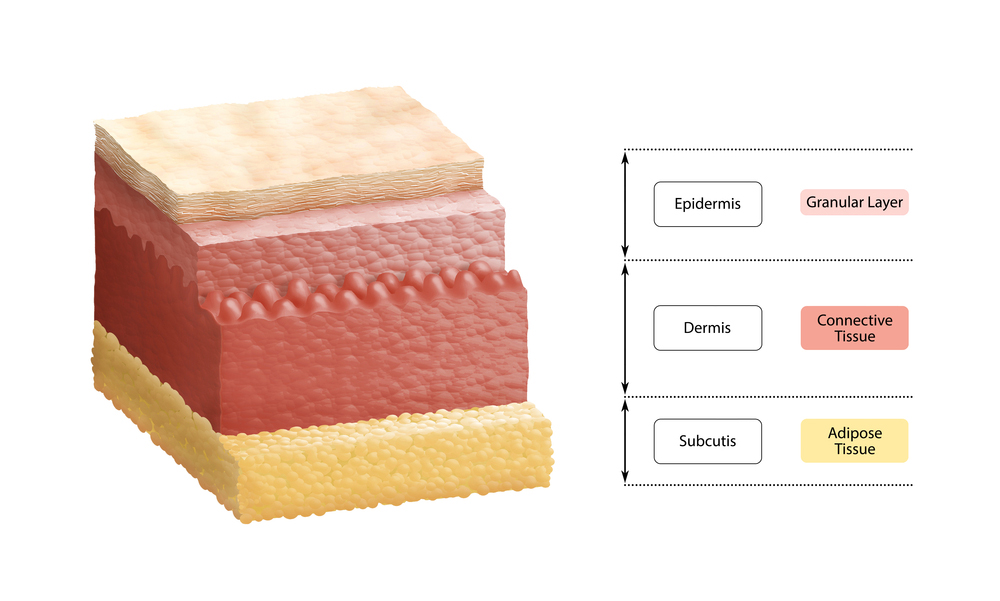In this lesson, we'll be covering all things related to skin diseases and disorders, including the three layers of skin and various conditions like MRSA, herpes simplex, fungal conditions, and who is most prone to getting skin diseases and disorders, along with most importantly – the best line of defense against such conditions.
What do We Mean by Skin Disorders and Diseases?
Skin diseases, disorders, and other conditions include people who have the following:
- Boils
- Infected wounds
- Open sores and cuts
- Abrasions
- Weeping dermatological lesions
Pro Tip #1: Anyone with these skin conditions should absolutely avoid working if there is any likelihood at all that they could contaminate healthcare supplies, body art equipment, or work surfaces. Just like someone with the flu should avoid working, so too should people with any of the conditions listed above.
Workers skin should be free from all rashes and infections. Healthcare workers, tattoo artists, and caregivers should always cover any open sores with bandages to avoid the spread of infection.

Getting to Know Your Own Skin
Skin is the largest organ of the body and if you think about it, it's not even close. Your skin contains blood vessels, sensory receptors, nerves, and sweat glands. Your skin is made up of several layers and varies in thickness from around 1.5mm to 4mm or more.
Pro Tip #2: Skin is the first line of defense against infection … as long as it's intact. If it's not intact, it should be covered. And if it's not intact and not covered, it's not defending you against anything.
The Three Layers of Skin
The three layers of skin are:
- The Epidermis – the thick outer layer of tissue that you affectionately know as your skin.
- The Dermis – this strong second layer of connective tissue is filled with blood vessels and nerves.
- The Hypodermis – this layer lies just below the dermis, is fattier than the other two, and is sometimes called the subcutaneous layer.
Warning: The reason that tattoo artists, in particular, have such a high risk is that they use needles that puncture these layers of skin multiple times per minute, making it much more possible to become infected.
Commonly Spread Skin Diseases
Let's take a look at some of the more commonly spread skin diseases, starting with …
Staphylococcus Aureus
Staphylococcus aureus is a bacterium that is commonly found on the skin and noses of some individuals. Most of the time, staph does not cause any major harm. Staph infections can look like pimples, boils, or other skin conditions and most are easily treatable.
Methicillin-Resistant Staphylococcus Aureus (MRSA)
MRSA infections can look like ordinary skin wounds, boils, or infected sores. However, most of the time, these sores appear not to heal and may even get worse. People contract MRSA infections by touching infected mucous membranes, skin, or contaminated objects.
Most MRSA infections are limited to skin infections. More severe or life-threatening MRSA infections occur most frequently among patients in healthcare settings with altered immune systems.
Herpes Simplex
Herpes simplex is a commonly spread skin disease that is a virus. It's generally found on the face, scalp, arms, neck, and upper chest. It is usually indicated (appears) as a small, round blister and when broken can secrete a clear or yellowish fluid.
People typically contract herpes by touching infected saliva, mucous membranes, or skin.
Fungal Skin Diseases
Some common skin diseases that are fungus-related are athletes foot and ringworm. Fungal infections cause red, patchy, flaky, and itchy areas of skin. They are also contagious and can be easily spread from one person to another.
Fungal skin diseases are usually spread when infected areas of a person or surface (showers, floors, benches, etc.) are touched by a non-infected person. To combat fungal infections, affected areas should be kept clean and dry.
Who is Most Prone to Skin Diseases and Disorders?
Some people with the following conditions are more prone to getting skin disorders:
- People with a history of Hepatitis B or C
- People with HIV or AIDS
- People with diabetes
- People with a history of hemophilia or other blood diseases and disorders
- People with a history of allergies or adverse reactions to pigments, dyes, latex, etc.
- People with a history of other immune disorders
Pro Tip #3: It should be noted that healing may be adversely affected by receiving a tattoo or other body art for all individuals listed above.